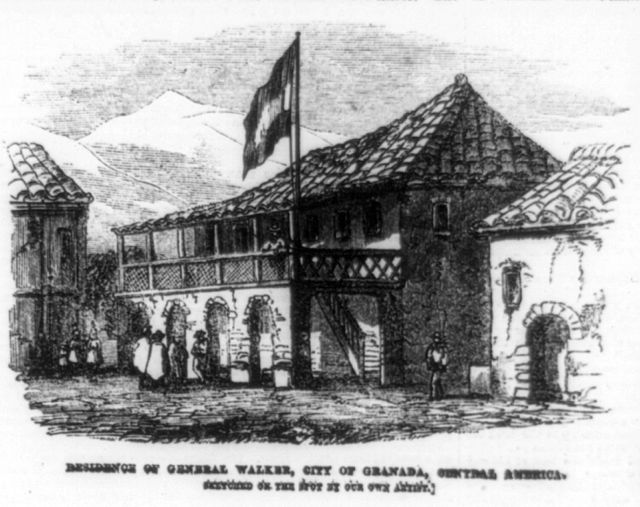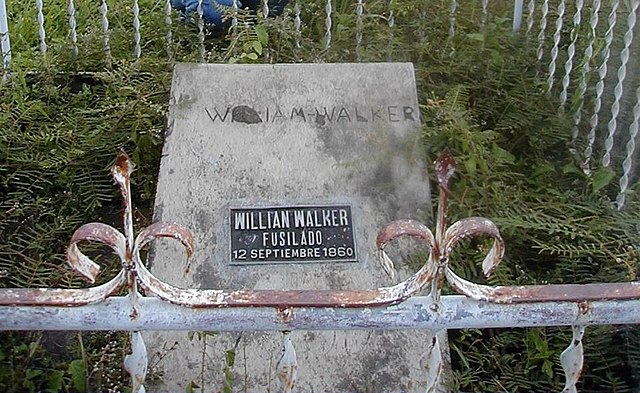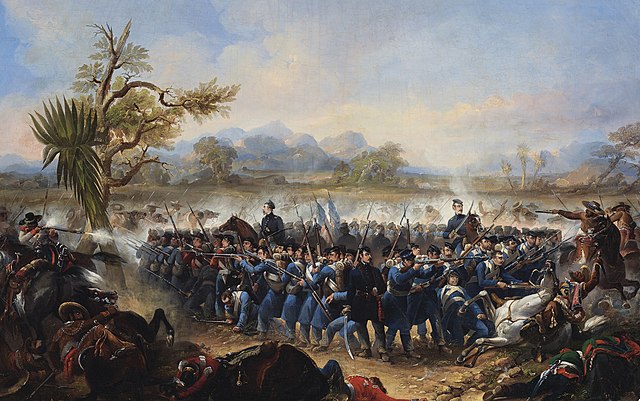William Walker (filibuster)
William Walker was an American physician, lawyer, journalist, and mercenary. In the era of the expansion of the United States, driven by the doctrine of "manifest destiny", Walker organized unauthorized military expeditions into Mexico and Central America with the intention of establishing slaveholding colonies. Such an enterprise was known at the time as "filibustering".
William Walker (filibuster)
President Walker's house in Granada, Nicaragua. On October 12, 1856, during the siege of Granada, Guatemalan officer José Víctor Zavala ran under heavy fire to capture Walker's flag and bring it back to the Central American coalition army trenches shouting "Filibuster bullets don't kill!". Zavala survived this adventure unscathed.
William Walker's grave in the Old Trujillo Cemetery, Trujillo, Colón, Honduras
The Costa Rica National Monument represents the five united Central American nations carrying weapons and William Walker fleeing.
Manifest destiny was a phrase that represented the belief in the 19th-century United States that American settlers were destined to expand westward across North America, and that this belief was both obvious ("manifest") and certain ("destiny"). The belief was rooted in American exceptionalism and Romantic nationalism, implying the inevitable spread of the Republican form of governance. It was one of the earliest expressions of American imperialism in the United States of America.
American Progress (1872) by John Gast is an allegorical representation of the modernization of the new west. Columbia, a personification of the United States, is shown leading civilization westward with the American settlers. She is shown bringing light from east to west, stringing telegraph wire, holding a school book, and highlighting different stages of economic activity and evolving forms of transportation. On the left, Indigenous Americans are displaced from their ancestral homeland.
The Battle of Río San Gabriel, was a decisive battle action of the Mexican–American War (1846–1848) as part of the US conquest of California.
The Battle of San Jacinto, was the final battle during the Texas revolution (1835-1836) which resulted in a decisive victory for the Texian army.
John L. O'Sullivan, sketched in 1874, was an influential columnist as a young man, but he is now generally remembered only for his use of the phrase "manifest destiny" to advocate the annexation of Texas and Oregon.








